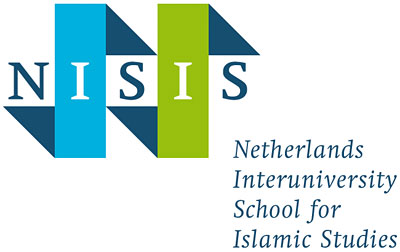Agenda
Call for Paper: Beyond Binaries: Intersex in Premodern Islamic Legal, Medical, and Literary Discourses
Call for Paper – Deadline March 1, 2024
Beyond Binaries: Intersex in Premodern Islamic Legal, Medical, and Literary Discourses
On 26 June 2024, I am organising an international conference entitled “Beyond Binaries: Intersex in Premodern Islamic Legal, Medical, and Literary Discourses” at the Department of Philosophy and Religious Studies, University of Utrecht, The Netherlands. This conference is part of the Veni Grant “Beyond Binaries: Intersex in Islamic Legal Tradition.”
While, on the one hand, numerous studies have currently focused on the history of Islamic doctrines and cultural traditions concerning gender and sexuality, such as effeminacy, transgenderism, and homosexuality, the questions regarding intersex topics in Islam and Muslim culture, despite having great visibility in terms of how they are publicly debated and invoked in polemical contexts, have hardly been tackled comprehensively by scholars of Islam.
On the other hand, presently, traditional Muslim scholars and public preachers often advocate for Islam as intolerant of trans-genderism or non-binary sex/gender divisions (see, for example, Assim al Hakeem: https://www.youtube.com/watch?v=pQ0DE7tI7No; Yasir Qadhi: https://www.youtube.com/watch?v=iCsUXGz1_6I; Amer, Jamil: https://www.youtube.com/watch?v=oWF-b_rXwpU). Not surprisingly, this dominant approach has reinforced orientalist narratives insisting that the male-female binary conception of humanity in Islamic teaching is a monolithic rigid code without room for discussion and historical developments. For example, Paula Sanders, in “Gendering the Ungendered Body,” argued for the following two notions: (1) premodern Islamic legal and medical texts demand sex and gender dimorphism that strictly define males and females as true opposites; (2) medieval Muslim jurists could not tolerate intersex ambiguity and imposed a gender on such (“unsexed-ungendered”) bodies to protect against social disorder and preserve male-dominated sexual hierarchy (Sanders 1991). Astonishingly, she drew such a broad conclusion primarily based on an examination of four mainly eleventh-century legal manuals, dominantly Kitāb al-mabsūṭ of the Ḥanafī jurist Muḥammad Ibn Aḥmad al-Sarakhsī (d. 1090). Despite the limitation of Sanders’s study, her thesis has been championed by various scholars of Islamic, Middle Eastern, and gender studies in the last three decades.
By contrast, Muslim discourses on sex or gender are oftentimes surprisingly dynamic. Therefore, some scholars have challenged Sanders’s position and upheld that the recognition of the intersex category as a non-binary possibility is particularly significant as classical Muslim jurists and physicians acknowledged the complex identification of such individuals, even when assigning them a specific legal sex/gender (Gesink 2018, Alipour 2017, Geissinger 2012). Moreover, contemporary grassroots-level activists and Muslim reformist scholars lobby for a more accepting attitude, referring to Islam’s inbuilt tolerance of both biological sex fluidity and non-binary conceptions of gender.
This conference thus offers a scholarly assessment of the premodern Muslim medical practice, Islamic law, and Persian and Arabic literary trajectories demarcating the space between the two poles of acceptance and rejection of the third sex and/or gender in premodern Muslim discourses. Its enquiry thus relates to the sex and/or gender identity(ies) of intersex individuals in Islamic legal, medical, and literary debates.
Paper proposals that examine – but are not limited to – the following questions are welcome:
- What are the discursive spaces on intersex topics in Islamic legal, medical, and/or literary debates?
- How did Muslim premodern medical experts perceive intersex bodies and behavioural characteristics?
- How have intersex topics shaped Muslim legal and/or medical discourses concerning binary/non-binary debates?
- How were intersex people illustrated in premodern Persian and Arabic literature in terms of their behavioural and biological characteristics?
- What was the reception of intersex people in premodern Muslim culture?
- What is the correlation between intersex (khunthā) and effeminate (mukhannath) in premodern Muslim vernacular culture as depicted by Persian and/or Arabic poetry and prose?
The conference is a primary step towards an edited volume on the theme. I thus invite accepted contributors to submit their papers to this volume for publication in a peer-reviewed university press after the conference.
Please send your abstract (no more than 300 words) and CV (no more than 150 words) in one document by email to m.alipoorkalaei@uu.nl before March 1, 2024
Conference date: 26 June 2024
Organizer: Mehrdad Alipour
Venue: Drift 21, room 0.05 (Sweelinckzaal), Utrecht University
Costs of the Conference: Reservations for the conference hall, lunch, and conference dinner (only for the speakers) will be covered by the organisation. Applicants should cover their own travel expenses and accommodations.
For more information on the conference and the project “Beyond Binaries: Intersex in Islamic Legal Tradition” go to the following link: https://beyondbinaries.nl


